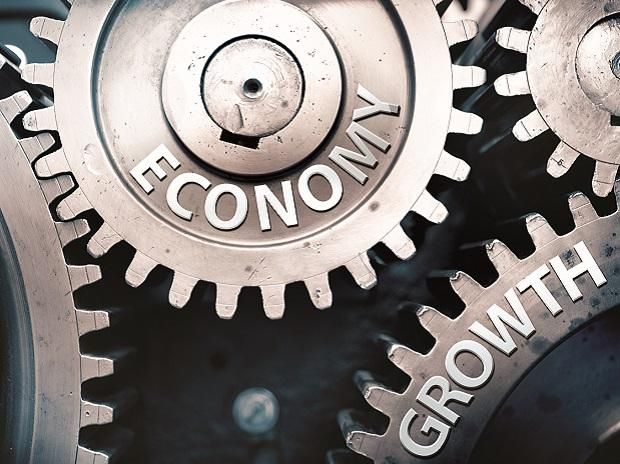The global economy is undergoing a significant transformation as it recovers from past disruptions and adapts to emerging challenges and opportunities. In 2025 and beyond, markets will be influenced by a combination of technological advancements, shifting trade policies, inflation trends, and geopolitical developments. Governments, businesses, and investors must navigate a complex landscape where economic growth will be driven by innovation, sustainability, and policy shifts. Understanding these key trends is crucial for making informed financial and strategic decisions.

Macroeconomic Trends Shaping 2025
Several macroeconomic factors will play a crucial role in shaping the global economy in 2025. Economic growth rates, inflation control measures, central bank policies, and labor market dynamics will influence market conditions worldwide.
Economic Growth and GDP Projections
After the uncertainties of the early 2020s, global GDP growth is expected to stabilize, albeit at varying rates across different regions. Advanced economies such as the U.S., the EU, and Japan are projected to see moderate growth, while emerging markets, particularly in Asia and Africa, will continue expanding at a faster pace. Countries investing in digital transformation, infrastructure development, and sustainable energy will likely experience stronger economic growth.
Emerging economies, driven by a young, tech-savvy workforce and large consumer markets, are poised to become the engines of global growth. Particularly, Africa is expected to emerge as a critical player, with increasing investments in infrastructure and a rising middle class. This rapid urbanization could result in expanded domestic markets, increased trade, and new economic hubs in the continent.
Inflation and Interest Rates
Inflation remains a major concern for economies worldwide. Central banks are employing monetary policies to manage inflation while ensuring economic stability. The Federal Reserve, European Central Bank, and other major financial institutions are expected to carefully adjust interest rates to balance economic growth and consumer affordability. Rising interest rates may impact borrowing costs for businesses and individuals, influencing investment decisions and spending behaviors.
Interest rates will remain a critical factor in determining market dynamics, with rising borrowing costs affecting industries dependent on credit and slowing consumer spending. Inflation management will likely continue to be a priority for central banks, while supply-side inflation pressures from raw materials and energy prices may create persistent risks for long-term price stability.
Employment and Labor Market Trends
The global workforce is evolving due to automation, AI integration, and the shift to hybrid work models. Labor markets will need to adapt to increasing demand for digital skills, while industries such as manufacturing and retail may see structural changes due to technological advancements. Governments and corporations are expected to implement upskilling programs to bridge the gap between traditional jobs and the future digital economy.
Automation and AI will lead to the displacement of certain manual jobs but create a surge in demand for tech-based roles, particularly in software development, data analysis, and cybersecurity. Alongside this, remote work models will continue influencing labor market dynamics, potentially creating shifts in workforce migration and urbanization trends as companies opt for a global talent pool.
The Impact of Geopolitical Developments
Geopolitical events and international trade policies will continue to shape global economic stability. Nations are restructuring supply chains to reduce dependency on specific regions, leading to increased nearshoring and diversification of production hubs.
Trade and Supply Chain Adjustments
The past few years have highlighted vulnerabilities in global supply chains, prompting businesses to explore alternatives such as regional manufacturing and increased automation. As trade agreements shift, countries will reassess their import-export dependencies, leading to new economic alliances and strategies to ensure stability in critical industries, such as technology, semiconductors, and energy.
The reconfiguration of global supply chains will likely create opportunities for countries in Southeast Asia, Latin America, and Africa to attract investment. Enhanced regional trade agreements, such as the Regional Comprehensive Economic Partnership (RCEP), will facilitate smoother cross-border trade, leading to a more interconnected global economy.

Emerging Markets and Regional Growth
Asia, particularly China and India, will continue playing a key role in the global economy. African nations, benefiting from increased investment in infrastructure and technology, will also gain traction as emerging economic powerhouses. Latin America is expected to see growth in technology-driven industries and renewable energy sectors. However, political uncertainties in various regions may introduce risks that businesses and investors must consider.
Emerging markets, though diverse in their opportunities, may experience increased political risk, including instability, regulatory shifts, and social unrest. However, the growth of the tech and green energy sectors across Africa and Latin America will offer significant new investment prospects, as governments and businesses align to meet global demands for innovation and sustainability.
Technology’s Role in Economic Expansion
Technological advancements, particularly in AI, blockchain, and automation, will be central to economic growth. Digitalization is reshaping industries, from finance to healthcare, leading to increased productivity and efficiency.
AI and Automation Driving Productivity
Artificial intelligence and machine learning are transforming business operations by automating tasks, optimizing supply chains, and enhancing decision-making processes. Companies that invest in AI-driven solutions will gain competitive advantages, contributing to overall economic efficiency.
AI’s integration into sectors such as healthcare, logistics, and finance will continue to drive innovation. Healthcare, in particular, will see breakthroughs in personalized medicine and diagnostic tools, while logistics and transportation will experience automation of supply chains and autonomous vehicle development, further fueling economic productivity.
The Digital Economy and E-commerce Growth
E-commerce and digital finance are expanding as consumer behaviors shift towards online platforms. Digital banking, cryptocurrencies, and fintech innovations are providing new opportunities for businesses and consumers to engage in the global economy with reduced transaction costs and greater financial inclusion.
Blockchain technology is expected to play a significant role in enhancing transparency and reducing inefficiencies in the global financial system. DeFi (Decentralized Finance) platforms are likely to grow as an alternative to traditional banking, providing more inclusive and democratized financial services to underserved regions.

Sustainability and the Green Economy
The global economy is moving toward sustainability, with governments and corporations prioritizing green initiatives. Environmental regulations, carbon reduction policies, and investments in renewable energy will shape economic growth patterns in 2025 and beyond.
Renewable Energy Investments
Countries are accelerating their transition to clean energy sources, with investments in solar, wind, and hydrogen technology expected to surge. Governments are implementing incentives for companies that adopt sustainable practices, further driving the shift toward a greener economy.
The rise of green bonds and sustainable finance will enable businesses to attract capital by aligning their operations with the global transition to net-zero carbon emissions. Meanwhile, green energy projects will continue to attract significant investment, further advancing the global shift to renewable energy.
ESG and Sustainable Business Models
Environmental, Social, and Governance (ESG) investing is becoming a fundamental aspect of financial markets. Businesses that prioritize sustainability and corporate responsibility are attracting more investors and consumers, creating long-term value and competitive advantages.
The continued growth of ESG-focused funds reflects a growing recognition among investors that long-term profitability depends on sustainable and socially responsible business practices. Companies that adopt eco-friendly policies, focus on diversity and inclusion, and maintain strong governance standards will likely have a competitive edge in the market.
The Future of Global Markets
Financial markets are expected to experience fluctuations as they adjust to macroeconomic trends, interest rate policies, and geopolitical shifts. Investors must adopt diversified strategies to navigate risks and capitalize on emerging opportunities.
Stock Markets and Investment Strategies
Stock markets will continue reflecting global economic conditions. Sectors such as technology, healthcare, and renewable energy are likely to outperform traditional industries. Investors should focus on long-term growth opportunities while remaining cautious of short-term market volatility.
In particular, the tech sector is expected to remain a dominant force, with continuous advancements in AI, biotechnology, and renewable energy technologies. Companies with robust digital transformation strategies and clear sustainability goals will stand out as attractive investment opportunities.
The Rise of Decentralized Finance (DeFi)
The financial industry is witnessing a transformation with the rise of decentralized finance (DeFi). Blockchain-based financial services are challenging traditional banking models, offering more accessible and cost-effective solutions for transactions, lending, and investments. As regulatory frameworks evolve, DeFi is expected to become a more integrated part of the global financial ecosystem.
DeFi’s growth presents both opportunities and risks, as it disrupts conventional financial services and challenges regulatory structures. Its potential to democratize access to capital could enable faster economic recovery and growth in underbanked regions, but the regulatory uncertainty surrounding it will require careful navigation by businesses and investors.
Conclusion: Preparing for the Economic Future
As the global economy continues to adjust to emerging dynamics, several additional trends will contribute to shaping the future landscape. From shifting demographic trends to the rise of new global financial frameworks, these elements will require businesses, investors, and governments to refine their strategies.
Demographic Shifts and Aging Populations
One of the key drivers of economic change in the coming years will be the demographic shifts happening in many developed countries. The aging populations in the U.S., Europe, and Japan are leading to higher dependency ratios and placing significant pressure on pension systems and healthcare services. While this will constrain economic growth in some regions, it will also present opportunities in sectors such as healthcare, elder care, and assistive technologies.
Conversely, many emerging markets, particularly in Africa and Southeast Asia, will continue to benefit from youthful populations that will contribute to the expansion of the labor force and consumer markets. The rise of a global middle class, especially in countries like India, will also have a profound impact on global consumption patterns and production priorities.
Rise of Digital Currencies and Central Bank Digital Currencies (CBDCs)
The increasing popularity of cryptocurrencies, coupled with growing concerns about monetary policy and inflation, has led many governments and central banks to explore the creation of Central Bank Digital Currencies (CBDCs). These digital currencies aim to modernize financial systems, enhance transaction efficiency, and provide governments with more control over monetary policy.
CBDCs could significantly disrupt the traditional banking system by providing a more secure, accessible, and cost-effective means of payment for individuals and businesses. However, they also raise concerns over privacy, surveillance, and their potential to displace traditional banking institutions. As CBDCs continue to develop, they may reshape global finance and offer new avenues for economic growth, particularly in developing nations.
Global Trade and Regional Economic Integration
Global trade in 2025 will be shaped by a trend toward regionalization and new trade agreements. The disruption of global supply chains due to trade wars, pandemics, and geopolitical tensions has led to a shift away from globalization towards a more localized approach. Countries are investing in regional trade agreements and working to increase self-sufficiency in critical industries such as food production, pharmaceuticals, and technology.
Regional initiatives like the African Continental Free Trade Area (AfCFTA) and the Comprehensive and Progressive Agreement for Trans-Pacific Partnership (CPTPP) are expected to foster stronger economic ties within regions, reducing dependency on traditional trade routes. These changes could result in a more fragmented global market but offer new opportunities for businesses seeking to adapt to these regionalized frameworks.
The Role of Global Health and Pandemics in Shaping Economic Recovery
The COVID-19 pandemic highlighted the critical importance of global health systems and the interconnectedness of global economies. As nations continue to recover, there is an increased focus on strengthening public health systems and investing in health infrastructure. This shift will lead to long-term investments in healthcare, biotech innovation, and pandemic preparedness.
Moreover, pandemics and other global health crises will likely remain a risk factor for economies in the coming decades. The ability of nations to swiftly respond to future health emergencies and implement recovery strategies will be crucial to maintaining economic stability and minimizing disruptions.
Shifts in Consumer Behavior: The Rise of Conscious Consumption
In recent years, there has been a marked shift in consumer behavior toward sustainability and social responsibility. The “conscious consumption” trend, where consumers increasingly demand ethically produced goods and services, will continue to grow. Brands that demonstrate a commitment to environmental protection, social causes, and fair labor practices will resonate with younger, more socially aware consumers.
In response to these changes, businesses across industries will need to rethink their supply chains, operations, and marketing strategies. The transition toward a circular economy—focused on reducing waste and reusing materials—will create new business opportunities, particularly in industries like fashion, food, and technology.
The Role of Emerging Technologies in the Future Economy
Quantum Computing: Unlocking New Possibilities
One of the most exciting technological developments on the horizon is the potential of quantum computing. While still in its infancy, quantum computing has the potential to revolutionize industries ranging from pharmaceuticals to logistics by solving complex problems at speeds unimaginable with current computing systems.
For businesses and investors, this presents an opportunity to be at the forefront of the next great technological leap. Industries such as cybersecurity, finance, and healthcare are likely to benefit from advancements in quantum computing, providing new ways to optimize systems, analyze vast amounts of data, and create breakthroughs in drug discovery and materials science.
Space Economy: A New Frontier for Investment
The rapidly growing space economy, driven by advances in satellite technology, space tourism, and even asteroid mining, is beginning to draw significant attention from investors. As space becomes increasingly accessible, businesses are exploring opportunities in telecommunications, data collection, and energy production. Space-based solar power, for example, could become a critical part of the global energy mix.
In addition to commercial endeavors, governments are investing heavily in space exploration, with initiatives such as NASA’s Artemis program aiming to return humans to the Moon and eventually establish a presence on Mars. As space exploration becomes more central to global economic development, it could unlock a wealth of new business opportunities, investments, and markets.
Conclusion: Strategic Decision-Making in the Global Economic Landscape
As we move into 2025 and beyond, the global economic landscape will be defined by the interplay of technological innovation, geopolitical shifts, demographic changes, and sustainability efforts. While the next few years may present significant challenges—including inflationary pressures, political instability, and market volatility—the opportunities are equally vast.
By focusing on adaptability, innovation, and long-term sustainability, businesses and investors can position themselves to not only survive but thrive in this evolving environment. The coming decade holds the potential for transformative economic growth, and those who embrace change and anticipate trends will be better equipped to capitalize on the new global economic order.
Read More: https://dev.ciovisionaries.com/articles-press-release/

